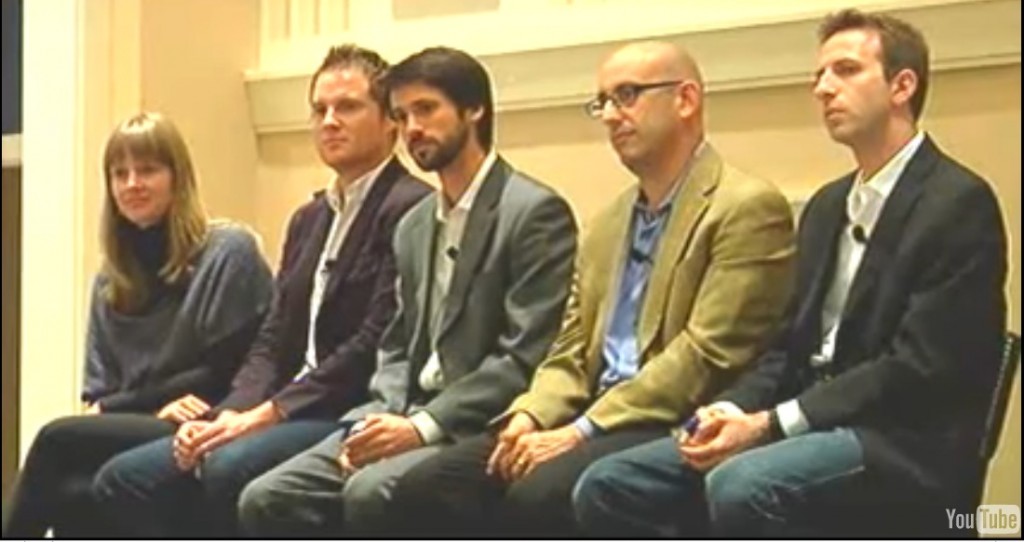How Large Organizations Foster Innovation
December 14, 2010

An expansive new study just released by the Network for Business Sustainability provides valuable suggestions for executives in large organizations about how to keep their companies innovative and competitive.
The report, “Embedding Sustainability in Organizational Culture,” involved reviewing over 13,000 academic and industrial studies, then narrowing these down to 179 primary sources which were synthesized to extract common principles and best practices.
The issue of how to spur creativity in large organizations was a driving motivation for the new book, MINITRENDS. Author John H. Vanston, Ph.D., a nuclear engineer, university professor, and chairman of the technology forecasting firm, Technology Futures, Inc., is often called upon by large businesses to help them predict the future. These big companies want to ride technology trends, not be run over by them.
It’s one thing to know what’s coming, and another to be able to adjust to it. The new report from the Network for Business Sustainability is chock-full of ideas for keeping large organizations from getting stuck. It contains both the principles of innovation and copious examples of clever ways big companies have found to stay nimble. Here are some suggestions culled from the 74-page report:
- Remove barriers to teamwork and collaboration through the abolition of separate dining rooms for managers and line employees.
- Support an innovation culture through small gestures of recognition. At Bank of America, a small pin presented by high-level management “gave encouragement to employees who enacted the organization’s values and refocused management styles toward promoting and supporting these values.”
- The Ethical Corporation begins every meeting with a quick success story. Storytelling is used to create the “true believers and adherents” essential for embedding innovation. These stories help teach team members new ways of thinking and doing things.
- Include employees in developing team mission statements. This helps employees “build a sense of collective ownership, commitment, and focus and, through this, a culture of innovation.”
- Engage suppliers, customers, and even community representatives in dialogue about innovation. “Organizations must consider the entire supply chain and process, where suppliers and vendors are seen as partners co-designing and co-creating ideas and sustainability innovations.”
- Senior management must nurture feedback channels to “create a safe place for bold ideas to emerge.” The authors suggest that it is not enough to provide a feedback mechanism, but that senior management must actively solicit feedback through those channels and hold regularly-scheduled meetings to review suggestions.
- Innovation challenges, involving deadlines, recognition, and financial rewards, have been effective spurring innovation in many companies.
The study was written by Stephanie Bertels, PhD., an assistant professor at Simon Fraser University. She has made the results available, at no charge, in two different formats:
- A Systematic Review of the Body of Knowledge ( 74-page PDF)
- A How-To Guide for Executives (20-page PDF)
For those companies wishing to remain innovative, and for chief executives concerned about the future of their organizations when they leave, I would also recommend the book, MINITRENDS. If we have focused on entrepreneurs and small businesses here on this blog, that’s because innovation in large organizations often is the result of employees cultivating an entrepreneurial mindset and the organization acting like a venture capitalist in support of those individual efforts.
Fully one-third of MINITRENDS is devoted to fostering creativity in large organizations. The book is inspiring to individual employees and provides them with a set of skills for identifying and qualifying trends that show promise for profitable development in the near future. It should be required reading in organizations that hope to outlive their founders.
STEVE O’KEEFE
News Editor, Minitrends Blog
Source: “Embedding Sustainability in Organizational Culture” (PDF), Network for Business Sustainability, December 2010
Image courtesy of the Network for Business Sustainabilty, used under Fair Use: Reporting.
Blackbaud Videos Reveal Trends in Nonprofit Technology
November 15, 2010

CLICK FOR VIDEO: Panel on Social Media for Nonprofits from the 2010 Blackbaud Conference on Nonprofit Technology
Last week, I broached the topic of how nonprofits are capitalizing on trends in technology to reach constituents through social networking. Today, I’m going to take the discussion up a notch and look at the fountainhead of many tech trends for nonprofits: Blackbaud, Inc.
Blackbaud was founded in 1981 with the purpose of providing technological support to nonprofit organizations. The company’s growth since has been phenomenal. Headquartered in Charleston, South Carolina, Blackbaud now employs more than 2,000 people worldwide. The company went public in 2004 and is traded on the NASDAQ exchange under ticker symbol BLKB.
Shortly after going public, Blackbaud hired Marc Chardon, a former CFO for Microsoft and manager of Microsoft France, as the company’s new president and CEO. Just last week, Blackbaud was named one of Forbes 100 Best Small Companies in America, a ranking based largely on exceptional financial performance.
Blackbaud has become an enormous driver of technology trends in the nonprofit sector. Last month, the company held its annual conference on nonprofit technology, drawing more than 2,200 people to Washington, D.C., for an action-packed program dominated by seminars on social networking.
This month, Blackbaud has made many of these programs available for free viewing on its BlackbaudTV channel on YouTube. These videos are both inspiring and educational for anyone interested in technology trends. Here are some of the highlights:
Global Trends and What They Mean to You
Marc Chardon, President and CEO of Blackbaud
Becoming a Networked Nonprofit: The Road to Effective Use of Social Media
Allison Fine & Beth Kanter, authors of The Networked Nonprofit
Social Media for Nonprofits
Claire Williams Diaz, Social Innovation at Twitter
Noah Everett, Founder of TwitPic
Matthew Mahan, Vice President of Impact at Causes
Geoff Livingston, Co-Founder of Zoetica
Brian Dresher, Mashable (formerly with USA Today)
Social Media: Paint by the Numbers
Holly Ross, Executive Director, NTEN: The Nonprofit Technology Network
The Nonprofit Trust Agent
Chris Brogan, New York Times bestselling co-author of Trust Agents
Most of the videos are an hour long, except for the Chris Brogan interview, which is a five-minute ambush video in the hallway of the conference center. The first video with Marc Chardon is a panel that covers such trends as social media, radical transparency, and the need for nonprofits to demonstrate ROI. The panel on social media for nonprofits is terrific, with presenters limited to five minutes to take their best shots, followed by the audience Q&A.
For access to all the BlackbaudTV videos — including a five-minute interview with Mark Zuckerberg’s engaging and articulate sister, Randi, about five things nonprofits can do to supercharge their Facebook pages — visit the BlackbaudTV page on YouTube.
STEVE O’KEEFE
News Editor, Minitrends Blog
Source: “Blackbaud Conference 2010: 5 Must-See Presentations,” Social Media 4 Nonprofits, 10/24/10
Source: “Reflections from Independent Sector and Blackbaud Conferences,” Beth’s Blog, 10/26/10.


